- Top
- Sustainability
- Response Based on the Taskforce on Climate-related Financial Disclosures (TCFD)
- Domestic Convenience Store Operations Strategy (Scenario Analysis)
Domestic Convenience Store Operations Strategy (Scenario Analysis)
Operating Company: Seven-Eleven Japan
In October 2019, the Group participated in the "Project to Support Climate Risk / Opportunity Scenario Analysis in Accordance with TCFD" of the Ministry of the Environment. The analysis covered the domestic store management of Seven-Eleven Japan, which accounts for about 60% of the Group’s operating income (as of 2019). We disclosed the results on our website for the first time in June 2020. In fiscal year ended February 28, 2022, we further deepened our analysis by developing substantive countermeasures and quantified risks and opportunities, in addition to our previous analysis.
Scenario Analysis Assumptions
-
Analysis assumptions (fiscal year ended February 28, 2022)
Scenario Decarbonization scenario (1.5°C–2.0°C) / Warming scenario Relevant
projectOperation of Seven-Eleven Japan stores in Japan Analysis scope In addition to the physical impact on stores, the analysis will cover costs in store operations and merchandise supply chain issues (raw materials, factories manufacturing merchandise, merchandise shipping) that significantly affect store operations, and customer behavior Target year Impact as of 2030
In this scenario analysis, mindful that the 1.5°C target has become the mainstream worldwide, we implemented analyses consistent with this 1.5°C target. Specifically, we set two scenarios, a “decarbonization scenario (1.5°C–2.0°C)” and a “warming scenario (2.7°C–4.0°C),” with reference to reports on future forecasts and other materials issued by governments and international organizations, including STEPS,*1 SDS,*2 and NZE2050,*3 indicated in the World Energy Outlook of the International Energy Agency (IEA). We analyzed the impact of climate change as of 2030.
-
- *1 STEPS: Stated Policies Scenario. This scenario reflects decarbonization policies and targets that have been so far publicized.
- *2 SDS: Sustainable Development Scenario. This scenario assumes that clean energy policies and investments will increase toward the achievement of the 2°C scenario targeted by the Paris Agreement, and that the energy supply system will progress smoothly toward the achievement of the Sustainable Development Goals.
- *3 NZE2050:Net Zero Emissions by 2050. Surpassing the Paris Agreement target, this scenario aims for net zero CO2 emissions before 2050 toward achievement of the 1.5°C goal.
Scenario Analysis Structure
For this analysis, Seven-Eleven Japan launched an internal project to formulate practical countermeasures and accurately quantify business impact, with its directors bearing that responsibility. 10 departments whose activities are affected by climate change participated. Discussions were held in each department regarding risks and opportunities and countermeasures, enabling analysis that is consistent with actual conditions, which helped to enhance our preparedness for climate change.
- Analysis structure (with participation of department heads and other duties supervisors)

Significant Risks and Opportunities, and Countermeasures
Approximately 160 risks and opportunities were submitted as a result of discussions within each department regarding specific risks and opportunities that could affect Seven-Eleven Japan 's business. The assessment referenced each risk and opportunity presented in the TCFD recommendations as well as international standards such as SASB. We examined the magnitude of the impact of these risks and opportunities on financial aspects such as sales and profits, as well as strategic aspects such as store operations and merchandise procurement. With carbon emissions targets and policies in each country (including the introduction of carbon pricing), changes in consumer preferences, increases in the severity and incidence of extreme weather events, and changes in precipitation and weather patterns, as the items for significant risks and opportunities, we qualitatively and quantitatively evaluated the various impacts on the business of these factors and formulated countermeasures for each.
Approximately 50 countermeasures were designated and classified following repeated discussions at respective departments, for the reduction of risks and expansion of opportunities with regards to countermeasures. Through these discussions, we confirmed that activities to reduce environmental loads being promoted based on the “GREEN CHALLENGE 2050” are effective for both the decarbonization scenario and the warming scenario.
Listing of Seven-Eleven Japan’s risks and opportunities, and countermeasures
◆Transition risks and opportunities (Decarbonization scenario, 1.5°C–2.0°C)
|
Significant risks and opportunities |
Concrete examples |
Impact | Scenario |
Business risks |
Business opportunities |
Main countermeasures | |
|---|---|---|---|---|---|---|---|
|
Policies and regulation |
Carbon emissions targets and policies in each country |
Introduction of carbon pricing |
Operating cost |
|
〇 |
|
|
| Fluctuations in retail electricity prices | Operating cost |
|
〇 |
|
|||
| Fluctuations in shipping fuel costs | Operating cost |
|
〇 |
|
|||
| Supporting the adoption of EV as delivery vehicles | Operating cost |
|
〇 |
|
|||
| Reputation | Changes in consumer preferences | Changes in sales due to sales of sustainable merchandise | Sales |
|
〇 |
|
|
◆Physical risks and opportunities (Warming scenario, 2.7°C–4.0°C)
|
Significant risks and opportunities |
Concrete examples | Impact | Scenario | Business risks | Business opportunities | Main countermeasures | |
|---|---|---|---|---|---|---|---|
| Acute | Increases in severity, frequency, etc. of extreme weather events | Damage from natural disasters |
Sales / Operating cost |
|
〇 |
|
|
| Insurance cost related to natural disasters | Operating cost |
|
〇 |
|
|||
| Chronic | Changes in precipitation and weather patterns | Price fluctuations of raw materials for agricultural, livestock, and marine products | Operating cost |
|
〇 |
|
|
| Increased average temperatures | Operating cost |
|
〇 |
|
|||
*The scenario with the larger impact was referred to in assessing each business impact.
(1)Significant transition risks and countermeasures: Decarbonization scenario (1.5°C–2.0°C)
We considered the transition risks and opportunities based on the decarbonization scenario in which various regulations and other measures are introduced to achieve the 1.5°C target. Of these, we estimated the following regarding the impact of the carbon tax system due to the introduction of carbon pricing, which is projected to have the biggest impact.
Significant transition risk: Impact of the carbon tax system
| Item | Business impact |
| Carbon tax (2030) | ¥12.6 billion |
Assumption: Carbon tax: $135/ton-CO2
(Maximum amount given in the IEA’s World Energy Outlook 2022)
・Foreign exchange rate: \131.62/$ (Rate used in financial statements for the term ended February 2023)
In the fiscal year ended February 28, 2022, we calculated the estimated maximum amount of impact from a carbon tax using the assumed tax amount as of 2030 at $130/ton-CO2, with reference to the maximum amount in the IEA’s World Energy Outlook 2020. The impact of the carbon tax was estimated at ¥22.1 billion based on a simple calculation, assuming CO2 emissions increase in line with the growth of business activities.
We went on in the fiscal year ended February 28, 2023 to re-estimate the financial impact of the carbon tax based on the IEA World Energy Outlook 2022, with the carbon tax as of 2030 set at $135/ton-CO2. This resulted in an estimate of ¥27.5 billion based on a simple calculation assuming CO2 emissions increase in line with the growth of business activities. However, if we reduce CO2 emissions to 50% in 2030 (compared to FY2013 levels) as per the target defined in our “GREEN CHALLENGE 2050” environmental declaration, this will reduce carbon taxes by ¥14.9 billion to ¥12.6 billion. Furthermore, we expect that the impact of the carbon tax will eventually be eliminated by promoting efforts to achieve our 2050 net zero emission target.
◆Main countermeasures
We will significantly reduce our carbon tax burden and transition risks such as higher electricity fee payments through efforts to achieve reductions in CO2 emissions. As approximately 90% of the Group’s CO2 emissions are attributable to electricity use from store operations, the three initiatives of energy savings, energy generation, and procurement of renewable energy are being pursued to reduce emissions. We also aim to reduce emissions throughout the supply chain, including Scope 3 emissions.
Seven-Eleven Japan is focusing the following main activities.
-
1 Energy savings
Reduction of electricity use through employees’ efforts to save energy and the adoption of energy-saving equipment -
2Energy generation
The generation and use of renewable energy through onsite solar panels (solar panels have been installed at 8,823 stores as of the end of February 2023)
We are now in the process of testing various types of equipment related to energy savings, energy generation, and energy storage to reduce CO2 emissions at Seven-Eleven stores to determine their suitability and effectiveness for more widespread deployment. In June 2023 we initiated a full-scale demonstration test at the 7-Eleven Misato-Hikonari 2-chome store with the goal of reducing the amount of electricity purchased by approximately 60% and CO2 emissions by approximately 70% compared to FY2013 levels.
We will continue with this project to minimize CO2 emissions at stores by deploying equipment that saves, generates, and stores energy, and we will procure and utilize renewable energy from offsite sources to even further reduce CO2 emissions.
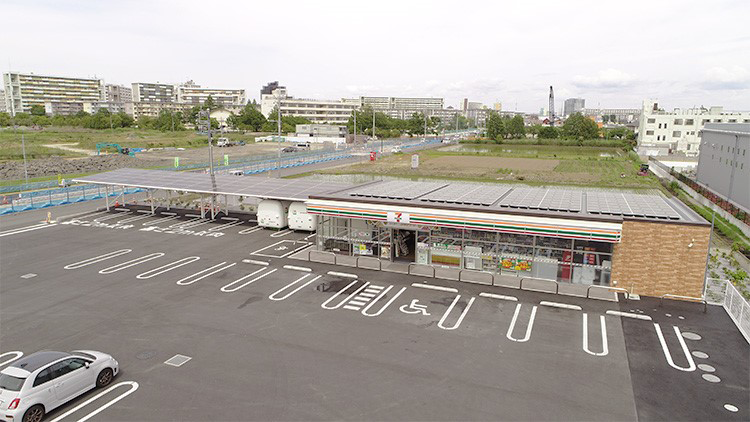
7-Eleven Misato Hikonari 2-chome store (test store for saving, generating, and storing energy)
-
3 Procurement of renewable energy
We are expanding cooperation with various electric power companies, including an offsite power purchase agreement (PPA) in three locations.
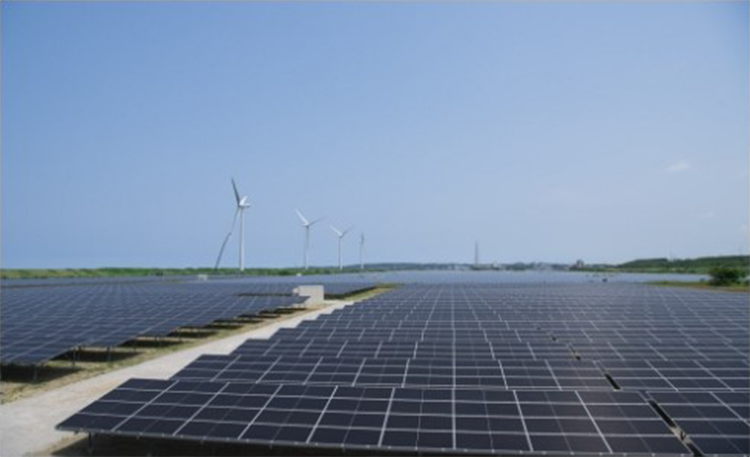
Offsite PPA with the Hokuriku Electric Power Group
News releases related to countermeasures, etc.
・(2022.6)Hokuriku Electric Power Group and Seven-Eleven Japan held a ceremony to mark the completion of the Hokuden BEST Technoport Fukui Solar Power Plant, a project for the local production and local consumption of renewable energy (in Japanese)
For more details of Seven-Eleven initiatives, refer to the Seven-Eleven website links.
・Reduced CO2 Emissions
(2)Significant physical risks and countermeasures: Warming scenario (2.7°C–4.0°C)
Significant physical risks: Impacts of natural disasters
| Item | Business impact |
| Store damage, merchandise damage, loss of sales due to closures, restoration cost, etc. | ¥11.2 billion |
Assumption: The amount of damage is estimated for flood damage to stores in the Tokyo metropolitan area (assuming flooding of the Arakawa River) as of 2030
* Estimated based on past flood damage. To ascertain the extent of damage, estimates are made without considering insurance coverage
In the warming scenario, natural disasters caused by extreme weather pose the greatest risk. It is difficult to predict when and where natural disasters will occur, and once they do, they can cause extensive damage. Currently, the occurrence of extreme weather such as heavy rainfall that cause disasters are increasing due to global warming, and this trend would become even more pronounced under this scenario. Based on the extent of damage caused by past disasters, we have estimated the flood damage to stores in the Tokyo metropolitan area, where the greatest damage would be expected. Based on hazard maps from the Ministry of Land, Infrastructure, Transport and Tourism, if the Arakawa River were to flood by five meters or more, the resulting damages including store damage, merchandise damage, loss of sales due to closures, and restoration cost, would amount to ¥11.2 billion.
◆Main countermeasures to impacts of natural disasters
We will strive to quickly reopen its stores and establishments in the event of a natural disaster as part of enhanced disaster response to continue serving as regional relief bases for local customers offering infrastructure, evacuation locations, etc. The following measures are being taken to address the increasing risk of natural disasters.
・Establish early recovery systems (such as the proprietary disaster management system 7VIEW)
・Prevent flood damage by expanding the installation of watertight panels and guard pipes
・Continue operations in the event of a disaster with “Phase Free (a concept of securing an adequate quality of life, regardless of phases such as daily life and emergencies)” facilities, including improved performance of storage batteries
・Prepare fuel reserves for emergency supply delivery
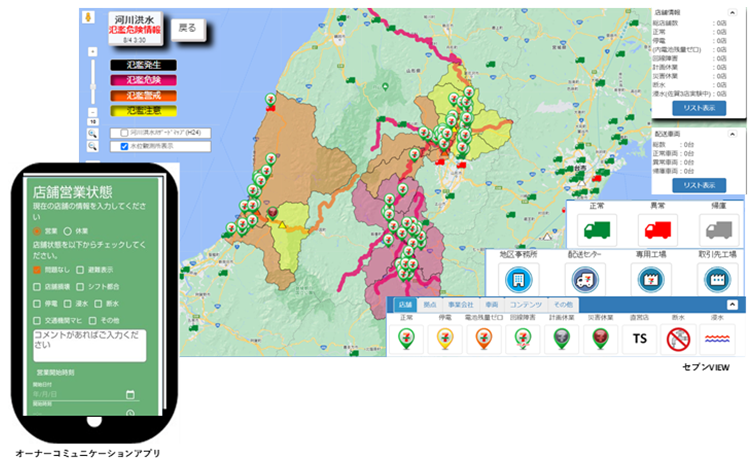
7VIEW (system for sharing information in the event of a disaster)
Significant physical risks: Increase in raw material cost
| Item Business impact | Item Business impact |
| Raw materials cost increase for rice | ¥2.2 billion |
| Raw materials cost increase for laver | ¥1.9 billion |
| Raw materials cost increase for livestock products (beef, pork, chicken, eggs) | ¥1.6 billion |
Assumption: Estimated increases in raw material costs as of the fiscal year ending February 28, 2031 due solely to lower yields resulting from climate change
* Yield changes are estimated from data provided by the Ministry of Education, Culture, Sports, Science and Technology; the Ministry of the Environment; the Japan Meteorological Agency; the National Institute for Environmental Studies; the National Agriculture and Food Research Organization, etc.
The increase in raw material cost due to changes in weather patterns, which is expected to have the next largest impact, was estimated. The scope was set based on the composition of purchase amount: rice, laver, and livestock products (beef, pork, chicken, and eggs). Assuming that climate change will lower harvest yields and increase the purchase price accordingly, we estimate that the increase will total ¥5.7 billion. However, this estimate does not include impacts such as those related to imports. Therefore, we assume that the actual amount will be several times larger and are considering countermeasures to address this.
◆Main countermeasures for increase in raw material cost
Under our environmental declaration “GREEN CHALLENGE 2050,” we set sustainable procurement as a specific theme—ensuring that food ingredients used in our original products are guaranteed sustainable, and are working toward a society that is in harmony with nature. Below are representative initiatives which we are undertaking for stable procurement as countermeasures for Increase in raw material cost.
• Disperse production sites of raw materials
・Ensure stable procurement through the expansion of raw material procurement from weather-resistant sources, such as vegetable factories, land-based aquaculture, etc.
・ Utilize digital technology and AI
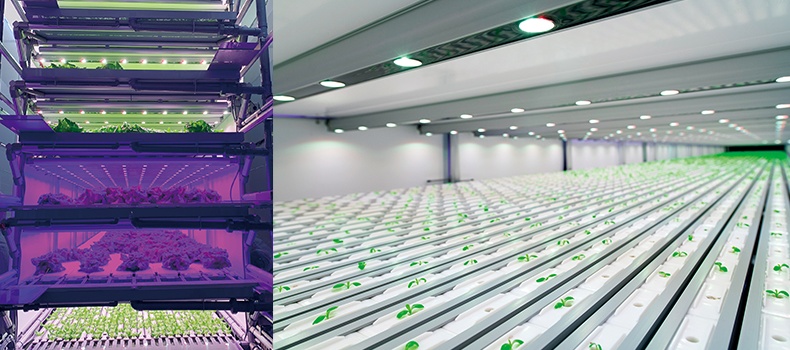
Indoor vegetable factory exclusively for Seven-Eleven
Sagamihara Vegetable Plant by Prime Delica Co., Ltd.
News releases related to countermeasures, etc.
・2023.7“Mirai Deli” products will be launched nationwide on July 14 offering sustainable raw material procurement and new product value (in Japanese)
For more details of Seven-Eleven initiatives, refer to the Seven-Eleven website links.
・Sustainable Procurement
(3)Business opportunities and main countermeasures for both scenarios
Business opportunities for the decarbonization scenario
In this scenario, we see changes in consumer awareness as a business opportunity. As consumers develop a strong interest in sustainable products and services in line with government policy and trends toward carbon neutrality, we believe that our current efforts will lead to opportunities and further accelerate those efforts. The following initiatives being promoted under our environmental declaration “GREEN CHALLENGE 2050” are good examples.
◆Initiatives to reduce CO2 emissions
As electric vehicles become more common on the roads in the decarbonization scenario, we believe that offering electric vehicle (EV) charging services at a greater number of Seven-Eleven parking lots will create more customer traffic.
We haves installed chargers for EVs and plug-in hybrid vehicles (PHVs) in some stores, and plan to further expand this in the future. We provide a fee-based charging service, with the initiative aimed at increasing the convenience of the commercial facilities and establishing a pattern for using EVs and PHVs of charging these while shopping. It also aims to contribute to the realization of a decarbonized society by promoting the spread of environment-friendly, next-generation cars.
◆ Initiatives for measures against plastic
We believe that converting the containers and packaging used for our original products to environmentally friendly materials and promoting PET bottle collection and recycling will attract public attention and create more customer traffic. Taking measures against plastic is one of the initiatives specified in our environmental declaration “GREEN CHALLENGE 2050.” We have set targets to convert the containers and packaging used for our original products (including Seven Premium) to 50% environmentally friendly materials by 2030 and 100% by 2050, thereby reducing the burden on the environment from waste plastic.
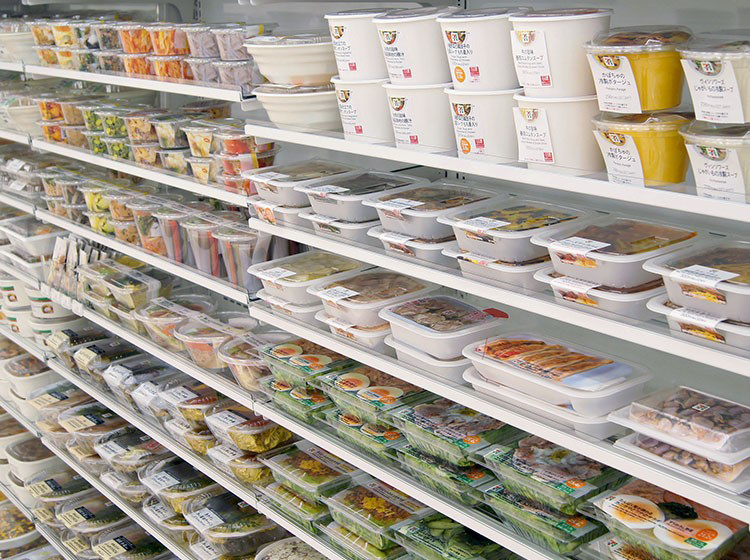
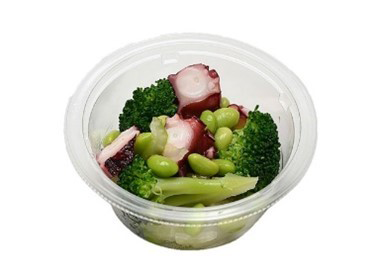
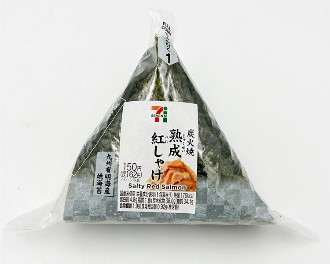
For the collection of plastic PET bottles, 2,956 collection machines have been installed at Seven-Eleven convenience stores (as of the end of July 2023). The collected bottles are recycled into new PET bottles and other products in Japan through a “closed-loop” recycling system.
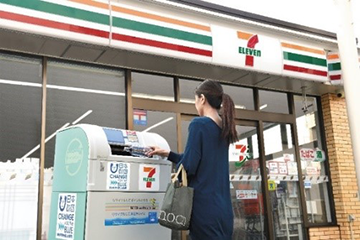
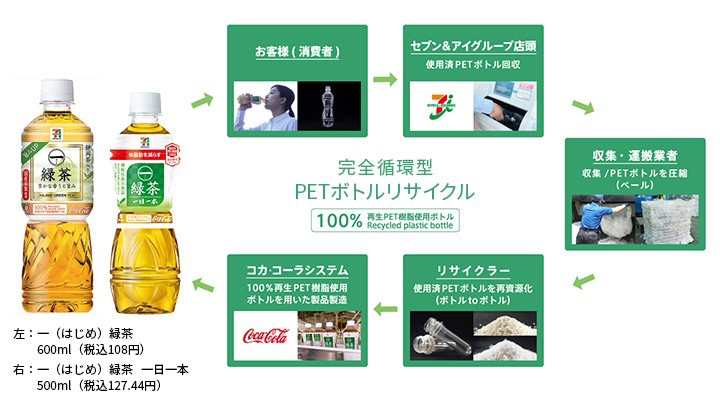
For more details of Seven-Eleven initiatives, refer to the Seven-Eleven website links.
・Development of Eco-Friendly Merchandise
・Reduction of Petroleum-Derived Plastics
◆Initiatives for sustainable procurement
We believe that expanding our product lineup of certified agricultural and fishery products, as well as our sustainable products with sustainability guarantees will attract the interest of customers and provide an opportunity to increase footfall at our stores. Seven-Eleven Japan is working on the development of a new series of “Mirai Deli” products that use raw materials that ensure sustainability by reducing environmental impact and realizing stable production through technological progress. As the first step, we have developed a “plant-based protein” that will reduce greenhouse gas emissions such as CO2 generated when importing and raising livestock. We plan to sell products that adopt “factory vegetables" that enable stable supply without being affected by climate change at stores nationwide from July 2023.

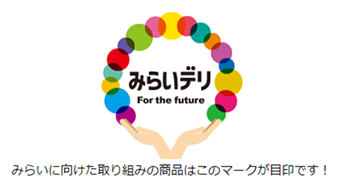
News releases related to business opportunities
・2023.7 “Mirai Deli” products will be launched nationwide on July 14 offering sustainable raw material procurement and new product value (Mirai Deli website) (in Japanese)
For more details of Seven-Eleven initiatives, refer to the Seven-Eleven website link.
・Sustainable Procurement
